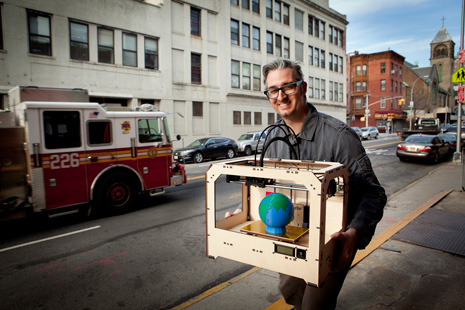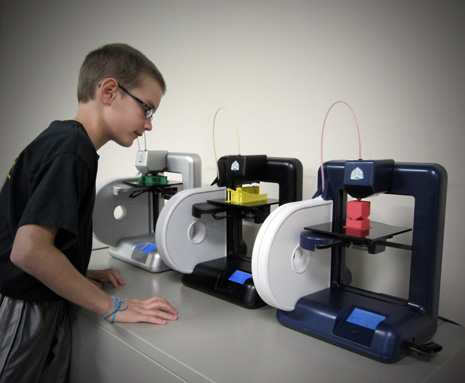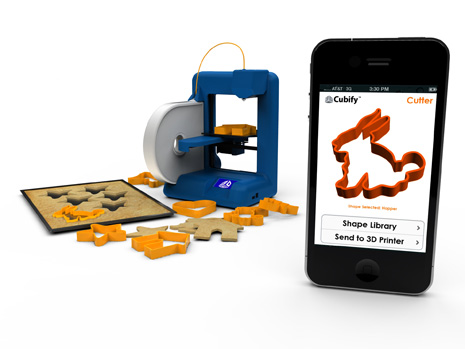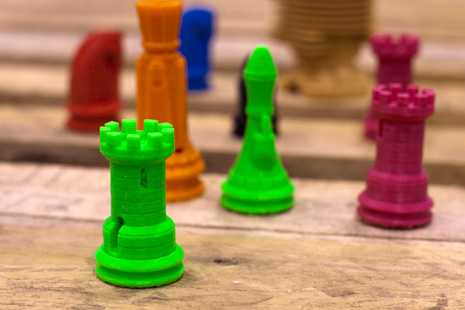
Parts built on 3D Systems’ new Cube 3D printer, which is being unveiled at CES
The International Consumer Electronics Show (CES) is currently taking place in Las Vegas. As well as the usual gizmos and gadgets on display the event is also proving that interest in low cost 3D printing is growing with two of the major players in the field – Makerbot Industries and 3D Systems – announcing some exciting new 3D printers.
Makerbot Industries, has released the next generation Makerbot, the Replicator ($1,749). With a faster and finer resolution and a build area of 9 x 6 x 6 inches, it demonstrates a decent 44% increase in volume on the previous machines. As CEO Bre Pettis says, “Pump up the volume”. There are two models, a single extrusion head, or a slightly more expensive dual extrusion head for printing in two colours or multiple materials. Both have the luxury of a built-in LED control interface.
In many respects the design, and ‘garage-nature’ of the Makerbot, RepRap and Printrbot businesses remind me of the early days of computing, not dissimilar to Steve Jobs and Steve Wozniak selling computer kits to the hobbyists and ‘homebrew’ clubs. This is undoubtedly a market to watch and Makerbot Industries are upping the game by expanding the build size and complexity, while still keeping the price low.

Makerbot Replicator with CEO Bre Pettis
Next up is 3D printing giant, 3D Systems, which unveiled its latest ‘Personal’ 3D Printer, the Cube, ($1,299, 5.5 x 5.5 x 5,5 inch by volume) together with a new community website www.cubify.com.

The Cube looks pretty well made and is aimed at everything from desktop engineers to being used at home ‘with the kids’. Using the cubify.com website kids (from 8 to 80 years old) can download STL models to print on their Cube. I’m not sure how long that interest will last but 3DS is also demonstrating technology developed by Geomagic which enables a Microsoft Kinect to be used to scan someone’s head, generate a 3D tessellated model and print a bust from the Cube. Very, very cool.
Cubify is to act as a community site and 3D Systems is actively encouraging developers to create applications for Cube users to access and print specific types of shapes. Cubify will be a database of parts to download as well as offering apps from data capture to printing with cheese or make complex cakes.
Should ‘little Johnny or Jemima’ produce something bigger than the cube can handle then the STL can be sent to a larger 3D Systems machine and delivered by post. Cube plastic refills cost $49 and one cartridge can print 10 to 12 average sized parts. .

So, this all just goes to prove that the 3D revolution is happening and the pace is accelerating. Watch this space…






